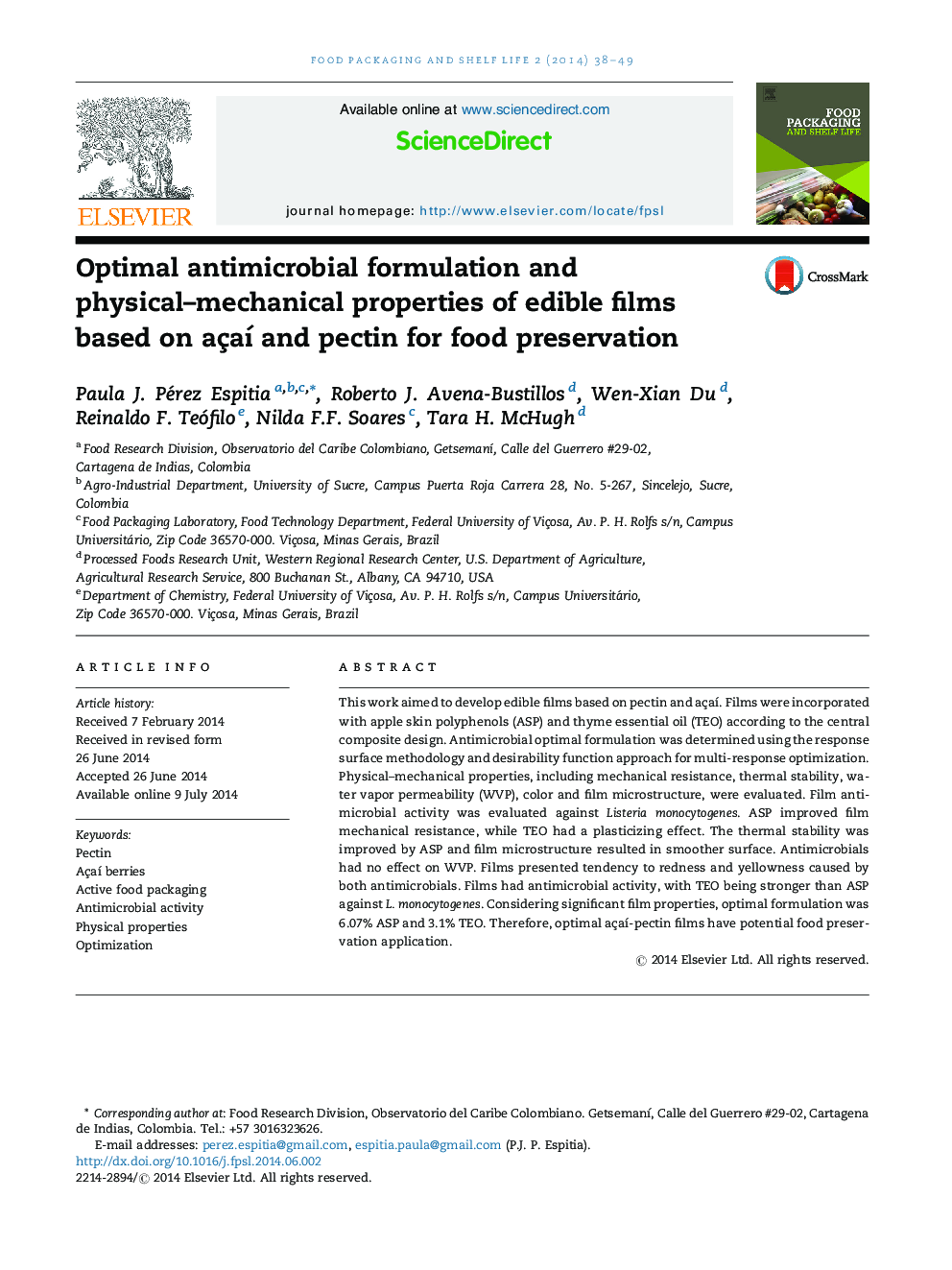| Article ID | Journal | Published Year | Pages | File Type |
|---|---|---|---|---|
| 19887 | Food Packaging and Shelf Life | 2014 | 12 Pages |
•Açaí films were developed using central composite design.•ASP improved mechanical resistance of films while TEO had a plasticizing effect.•Incorporated antimicrobials had no effect on water vapor permeability of açaí films.•Açaí edible films had improved thermal stability with increasing ASP concentrations.•Açaí antimicrobial edible films inhibited the growth of Listeria monocytogenes.
This work aimed to develop edible films based on pectin and açaí. Films were incorporated with apple skin polyphenols (ASP) and thyme essential oil (TEO) according to the central composite design. Antimicrobial optimal formulation was determined using the response surface methodology and desirability function approach for multi-response optimization. Physical–mechanical properties, including mechanical resistance, thermal stability, water vapor permeability (WVP), color and film microstructure, were evaluated. Film antimicrobial activity was evaluated against Listeria monocytogenes. ASP improved film mechanical resistance, while TEO had a plasticizing effect. The thermal stability was improved by ASP and film microstructure resulted in smoother surface. Antimicrobials had no effect on WVP. Films presented tendency to redness and yellowness caused by both antimicrobials. Films had antimicrobial activity, with TEO being stronger than ASP against L. monocytogenes. Considering significant film properties, optimal formulation was 6.07% ASP and 3.1% TEO. Therefore, optimal açaí-pectin films have potential food preservation application.
Graphical abstractFigure optionsDownload full-size imageDownload as PowerPoint slide
